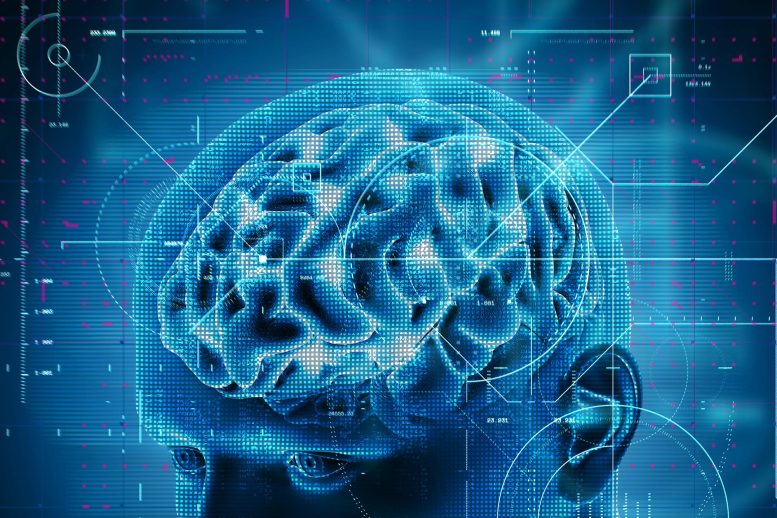
Researchers have discovered that the shape of a person’s brain significantly impacts thought, feeling, and behavior, overturning the prevailing emphasis on complex neuronal connectivity. Utilizing MRI scans and the principle of eigenmodes, they found that brain function is closely linked to its geometric properties, much like how the shape of a musical instrument determines its sound, offering new avenues for exploring brain function and disease.
The shape of our brain rather than the interactions between various regions, plays a pivotal role in influencing our thoughts, emotions, and actions.
For over a hundred years, scientists have held the belief that our thoughts, feelings, and dreams are shaped by the way various brain regions interact via a vast network of trillions of cellular connections.
However, a recent study led by the team at Monash University’s Turner Institute for Brain and Mental Health has examined more than 10,000 distinct maps of human brain activity and discovered that the overall shape of an individual’s brain has a much more substantial impact on our cognitive processes, emotions, and behavior than its intricate neuronal connectivity.
The study, recently published in the prestigious journal, Nature draws together approaches from physics, neuroscience, and psychology to overturn the century-old paradigm emphasizing the importance of complex brain connectivity, instead identifying a previously unappreciated relationship between brain shape and activity.
Lead author and Research Fellow Dr James Pang, from the Turner Institute and Monash University’s School of Psychological Sciences, said the findings were significant because they greatly simplified the way that we can study how the brain functions, develops, and ages.
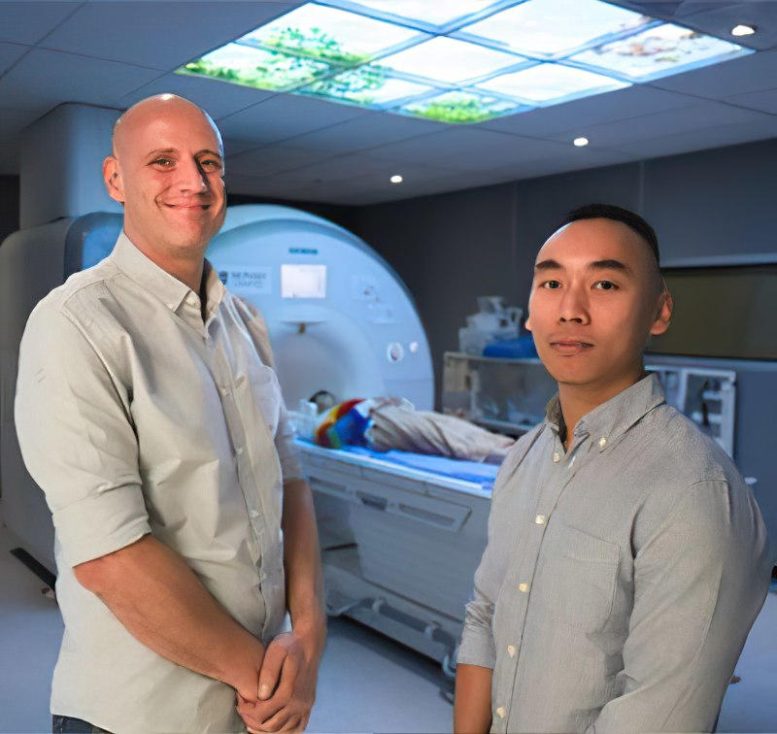
Alex Fornito (left) and James Pang studied over 10,000 MRIs to determine brain shape is important. Credit: Monash University
“The work opens opportunities to understand the effects of diseases like dementia and stroke by considering models of brain shape, which are far easier to deal with than models of the brain’s full array of connections,” Dr Pang said.
“We have long thought that specific thoughts or sensations elicit activity in specific parts of the brain, but this study reveals that structured patterns of activity are excited across nearly the entire brain, just like the way in which a musical note arises from vibrations occurring along the entire length of a violin string, and not just an isolated segment,” he said.
The research team used magnetic resonance imaging (MRI) to study eigenmodes, which are the natural patterns of vibration or excitation in a system, where different parts of the system are all excited at the same frequency. Eigenmodes are normally used to study physical systems in areas such as physics and engineering and have only recently been adapted to study the brain.
This work focused on developing the best way to efficiently construct the eigenmodes of the brain.
“Just as the resonant frequencies of a violin string are determined by its length, density, and tension, the eigenmodes of the brain are determined by its structural––physical, geometric and anatomical––properties, but which specific properties are most important has remained a mystery,” said co-lead author, Dr Kevin Aquino, of BrainKey and The University of Sydney.
The team, led by the Turner Institute and School of Psychological Sciences ARC Laureate Fellow, Professor Alex Fornito, compared how well eigenmodes obtained from models of the shape of the brain could account for different patterns of activity when compared to eigenmodes obtained from models of brain connectivity.
“We found that eigenmodes defined by brain geometry––its contours and curvature––represented the strongest anatomical constraint on brain function, much like the shape of a drum influences the sounds that it can make,” said Professor Fornito.
“Using mathematical models, we confirmed theoretical predictions that the close link between geometry and function is driven by wave-like activity propagating throughout the brain, just as the shape of a pond influences the wave ripples that are formed by a falling pebble,” he said.
“These findings raise the possibility of predicting the function of the brain directly from its shape, opening new avenues for exploring how the brain contributes to individual differences in behavior and risk for psychiatric and neurological diseases.”
The research team found that, across over 10,000 MRI activity maps, obtained as people performed different tasks developed by neuroscientists to probe the human brain, activity was dominated by eigenmodes with spatial patterns that have very long wavelengths, extending over distances exceeding 40 mm.
“This result counters conventional wisdom, in which activity during different tasks is often assumed to occur in focal, isolated areas of elevated activity, and tells us that traditional approaches to brain mapping may only show the tip of the iceberg when it comes to understanding how the brain works,” Dr. Pang said.
Reference: “Geometric constraints on human brain function” by James C. Pang, Kevin M. Aquino, Marianne Oldehinkel, Peter A. Robinson, Ben D. Fulcher, Michael Breakspear and Alex Fornito, 31 May 2023, Nature.
DOI: 10.1038/s41586-023-06098-1


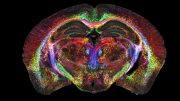

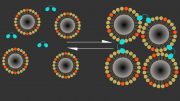
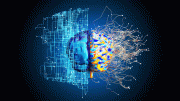
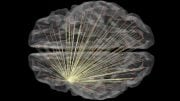
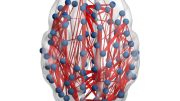

Ah, would that Dr. Robert Ornstein were still alive to study the late breaking significance of brain shape in understanding brain function. His integrative mind would have contributed much to this new holistic model of how the brain works.
So they finish this article by admitting that “traditional approaches to brain mapping may only show the tip of the iceberg when it comes to understanding how the brain works”…, and yet here they are again jumping to conclusions after a few MRI’s and a bit of data.
Why can’t modern scientists – and those that eagerly write about their scientific breakthroughs – just limit themselves to sharing their findings but only as merely theoretical? Why every time they have a new theory about something (because that’s all this really is) not just say it as such instead of trying to shove it as fact to the world?
So now all of the sudden it’s the brain shape; and apparently, little to do with the neural connectivity. Now watch how some time in the very near future someone will be writing a new paper about this same topic completely refuting what is being said here, or saying something like well it’s both shape and neural connectivity and a bunch of other little things in there functioning is tandem. Just saying, let’s not jump to conclusions. All that was said in this article seems like mere speculation. That’s all. A new idea, a new theory that still needs a lot more work done before conclusions are made and old theories are dumped in the trash.
Oh goodness, the Phrenologists were right after all. They just didn’t dig deep enough.
“For every fact there is an infinity of hypotheses.”
― Robert M. Pirsig (1928-2016)
I guess the old phrenologists had a point.
That was my first thought too… Phrenology rediscovered. We keep proving the worth of knowledge discovered empirically. Everything old is new again.
So! Eggheads are more intelligent…
What a terrible story full of vast hardly-supported claims
Oh, then I guess Dr. Shockley WASN’T a racist after all.
It’s becoming clear that with all the brain and consciousness theories out there, the proof will be in the pudding. By this I mean, can any particular theory be used to create a human adult level conscious machine. My bet is on the late Gerald Edelman’s Extended Theory of Neuronal Group Selection. The lead group in robotics based on this theory is the Neurorobotics Lab at UC at Irvine. Dr. Edelman distinguished between primary consciousness, which came first in evolution, and that humans share with other conscious animals, and higher order consciousness, which came to only humans with the acquisition of language. A machine with primary consciousness will probably have to come first.
What I find special about the TNGS is the Darwin series of automata created at the Neurosciences Institute by Dr. Edelman and his colleagues in the 1990’s and 2000’s. These machines perform in the real world, not in a restricted simulated world, and display convincing physical behavior indicative of higher psychological functions necessary for consciousness, such as perceptual categorization, memory, and learning. They are based on realistic models of the parts of the biological brain that the theory claims subserve these functions. The extended TNGS allows for the emergence of consciousness based only on further evolutionary development of the brain areas responsible for these functions, in a parsimonious way. No other research I’ve encountered is anywhere near as convincing.
I post because on almost every video and article about the brain and consciousness that I encounter, the attitude seems to be that we still know next to nothing about how the brain and consciousness work; that there’s lots of data but no unifying theory. I believe the extended TNGS is that theory. My motivation is to keep that theory in front of the public. And obviously, I consider it the route to a truly conscious machine, primary and higher-order.
My advice to people who want to create a conscious machine is to seriously ground themselves in the extended TNGS and the Darwin automata first, and proceed from there, by applying to Jeff Krichmar’s lab at UC Irvine, possibly. Dr. Edelman’s roadmap to a conscious machine is at https://arxiv.org/abs/2105.10461